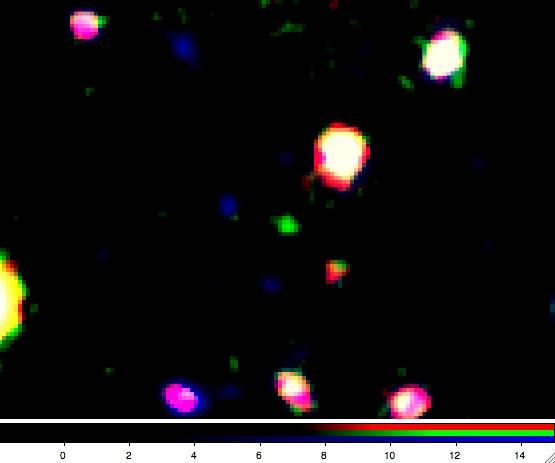Newfound Object Is Faintest Distant Galaxy Seen at Universe's Edge

Astronomers have found the faintest galaxy yet seen in the deep, distant reaches of space, an object whose light has taken 13 billion years to reach us.
The tiny galaxy, which existed about 800 million years after the Big Bang created the universe, is among the top 10 most distant objects known.
"This image is like a baby picture of this galaxy, taken when the universe was only 5 percent of its current age," Arizona State University astronomer James Rhoads said in a statement. "Studying these very early galaxies is important because it helps us understand how galaxies form and grow."
Rhoads and his colleagues used the IMACS instrument on the Magellan Telescopes at the Carnegie Institution's Las Campanas Observatory in Chile to image the galaxy. They applied a special filter that restricted the light coming in to the telescope to a narrow range of infrared wavelengths, allowing them to block out all but the most distant, faint objects.
"We have been using this technique since 1998 and pushing it to ever-greater distances and sensitivities in our search for the first galaxies at the edge of the universe," said Arizona State University's Sangeeta Malhotra.
The faint galaxy is designated LAEJ095950.99+021219.1, and has a redshift of 7. Astronomers use redshift to denote distance, because the farther away something is, the more its light has been shifted toward the red range of the electromagnetic spectrum. Scientists have seen only a handful of galaxies with redshifts of 7, and none of those have been as dim the newfound galaxy.
"With this search, we've not only found one of the furthest galaxies known, but also the faintest confirmed at that distance," Malhotra said. "Up to now, the redshift 7 galaxies we know about are literally the top one percent of galaxies. What we're doing here is to start examining some of the fainter ones – thing that may better represent the other 99 percent."
Sign up for the Live Science daily newsletter now
Get the world’s most fascinating discoveries delivered straight to your inbox.
The researchers report their discovery in the June 1 issue of The Astrophysical Journal Letters.
This story was provided by SPACE.com, a sister site to LiveScience. Follow SPACE.com for the latest in space science and exploration news on Twitter @Spacedotcom and on Facebook.













